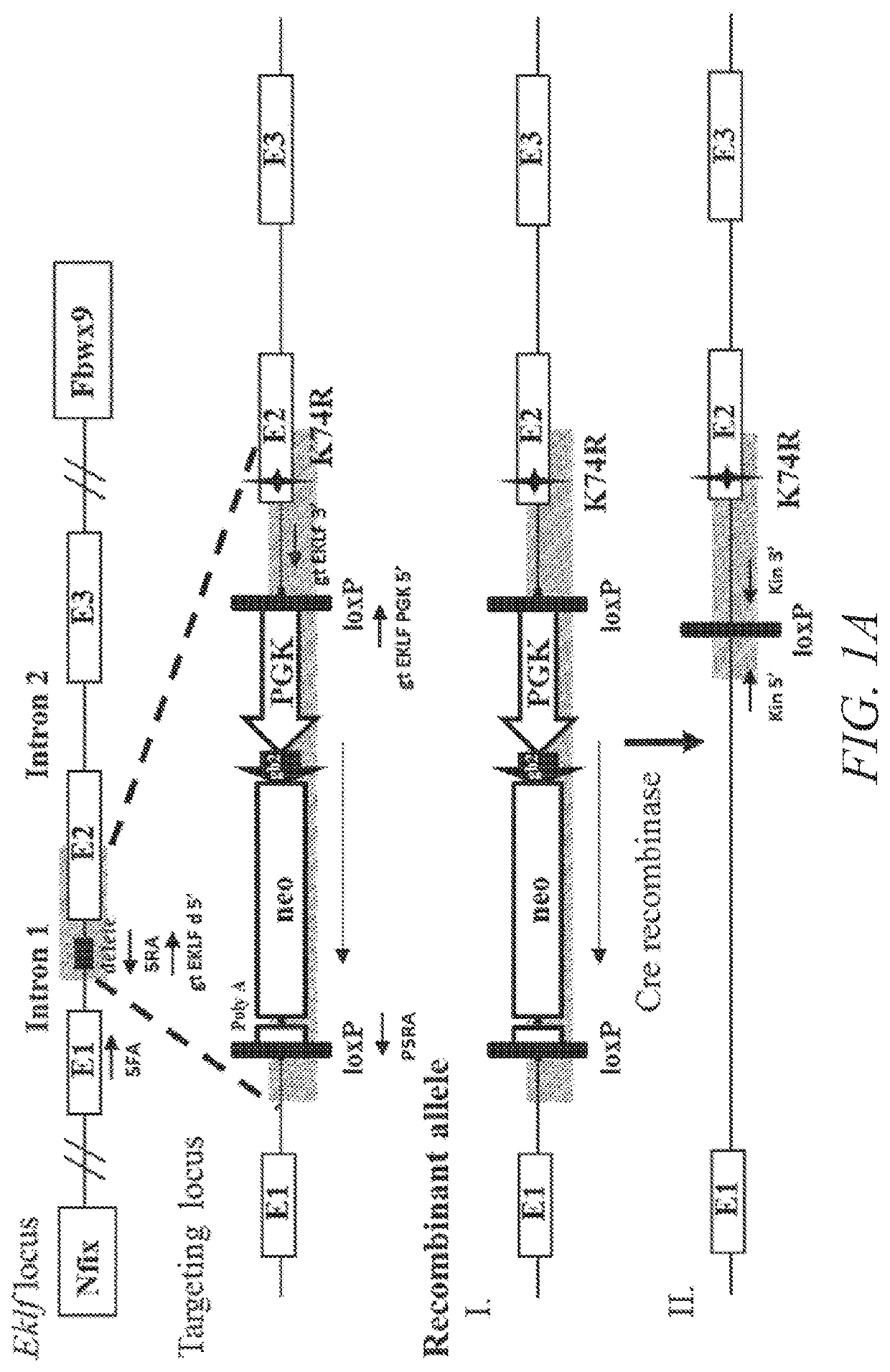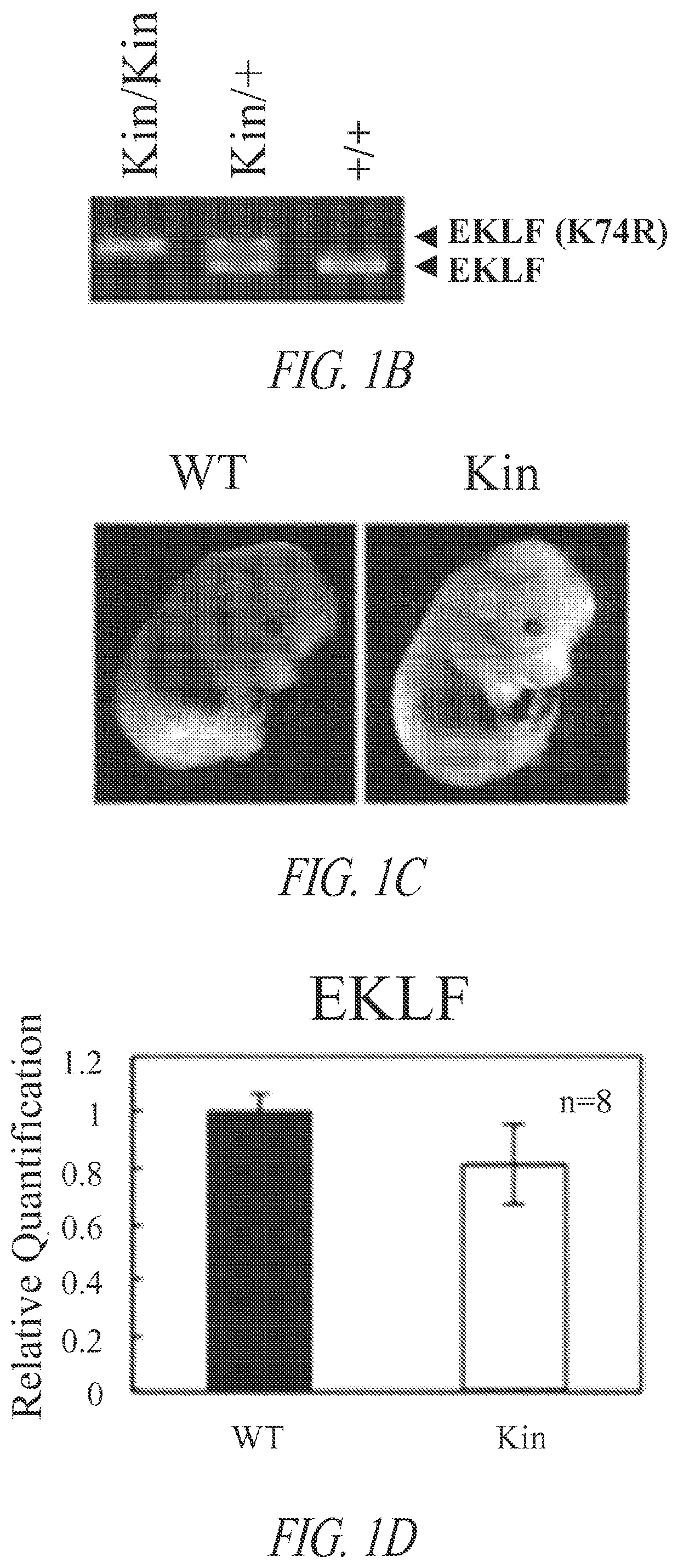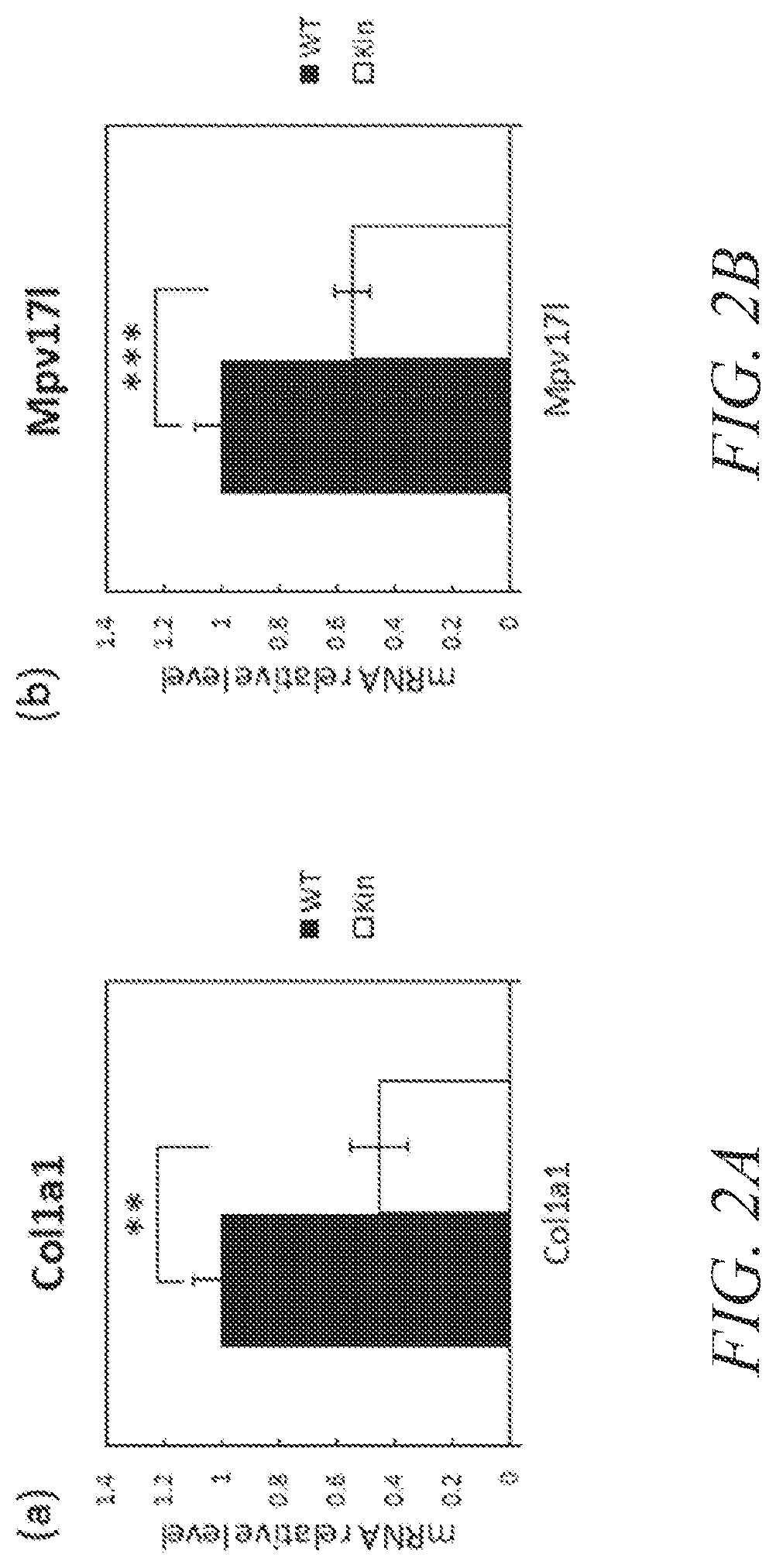Animal model of longevity and related methods for increasing longevity and inhibiting tumorigenesis
a technology of longevity and animal models, applied in the field of animal models of longevity, can solve the problems of less understanding of how, and achieve the effects of reducing graying of hair, increasing muscle strength, and increasing motor coordination
- Summary
- Abstract
- Description
- Claims
- Application Information
AI Technical Summary
Benefits of technology
Problems solved by technology
Method used
Image
Examples
example 1
Generation of EKLF K74R Mice
[0223]Transgenic mice carrying the EKLF K74R mutant allele were generated according to procedures described in the “Materials and Methods” section. Schematic drawings of the target vector constructs for generating EKLF K74R mice are illustrated in FIG. 1A. Genomic DNA from mouse tails were analyzed by PCR and confirmed that both the heterologous and homozygous mice contained the EKLF K74R mutant allele (FIG. 1B). The EKLF K74R Knock-in mice bred normally and produced offspring in the expected Mendelian ratios, indicating that this modified EKLF gene functioned analogous to the wild type EKLF allele, and does not cause embryonic lethality. Quantitative mRNA analysis of embryos indicated that EKLF K74R mice and wild-type littermates possessed similar levels of total EKLF mRNA (FIG. 1D).
[0224]The EKLF protein is a transcription factor with promoter and repressor activities. The transcriptome is changed by the K74R mutation. As analyzed by microarray hybridiz...
example 2
EKLF K74R Mutation Leads to Enhanced Lifespan
[0225]The EKLF K74R transgenic mice had an extended lifespan compared to wild-type littermates. Specifically, the median life span of the EKLF K74R mice (n=45) was 3 months longer, as compared with that of the wild-type mice (n=33) (FIG. 3A). Results of the lifespan study are summarized in Table E2.
TABLE E2Lifespan of EKLF K74R MiceExtended Median and Maximum Lifespan of EKLF K74RGenotypeMaxi-OldestYoungest(males)MeanmumMinimum10%10%nK74R32.2 ± 4.040.425.438.7 ± 1.526.5 ± 1.245WT29.5 ± 2.433.924.132.9 ± 0.724.9 ± 0.733
[0226]As evident from Table 1, the maximum lifespan (mean lifespan of the oldest 10% within a cohort) of the EKLF K74R male mice increased by 6.5 months compared to wild-type littermates. The maximum lifespan of EKLF K74R mice was about 40 months, which was longer than other longevity mice reported in the literature, e.g., CISD2 (Wu et al., Human Molecular Genetics (2012) 21, 3965-3968). Furthermore, 32 month-old EKLF K74R m...
example 3
EKLF K74R Mutation Leads to Cancer Resistance
[0233]Phenotypic observations showed lower age-related cancer incidence rates in the EKLF K74R mice than in wild-type littermates, as exemplified by the Micro-PET imaging analysis (FIG. 9A) and examination of dissected 24-month old mice (FIG. 9B).
[0234]Cancer cells were implanted in EKLF K74R mice and wild-type littermates by intravenous injection. B16F10 melanoma cells (ATCC# CRL6475) were derived from the same (C57BL / 6J) genetic background as the EKLF K74R mice. An in vivo metastasis assay was performed by tail vein injection (i.v. injection) of B16F10 cells into the mice (FIG. 10). Lungs were examined 2 weeks after injection of the B16F10 cells. These data indicate that the EKLF K74R mice have reduced incidence of cancer occurrence. A preliminary study showed a non-statistically significant small trend towards reduced tumor growth in Kin mice when the B16F10 melanoma cells were injected into the mice subcutaneously.
[0235]Together, thes...
PUM
 Login to View More
Login to View More Abstract
Description
Claims
Application Information
 Login to View More
Login to View More - R&D
- Intellectual Property
- Life Sciences
- Materials
- Tech Scout
- Unparalleled Data Quality
- Higher Quality Content
- 60% Fewer Hallucinations
Browse by: Latest US Patents, China's latest patents, Technical Efficacy Thesaurus, Application Domain, Technology Topic, Popular Technical Reports.
© 2025 PatSnap. All rights reserved.Legal|Privacy policy|Modern Slavery Act Transparency Statement|Sitemap|About US| Contact US: help@patsnap.com



